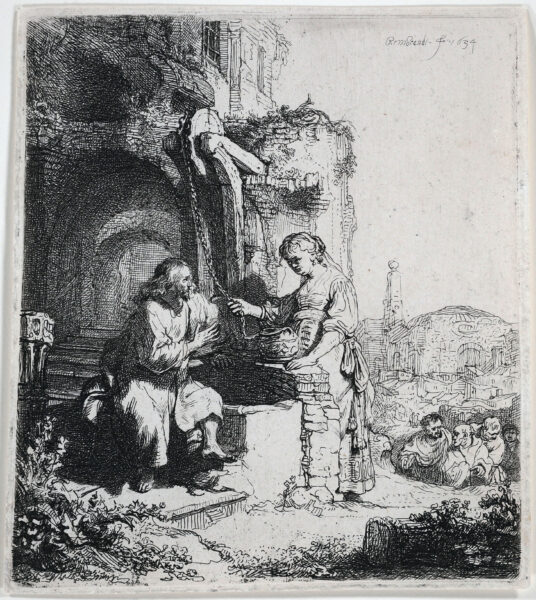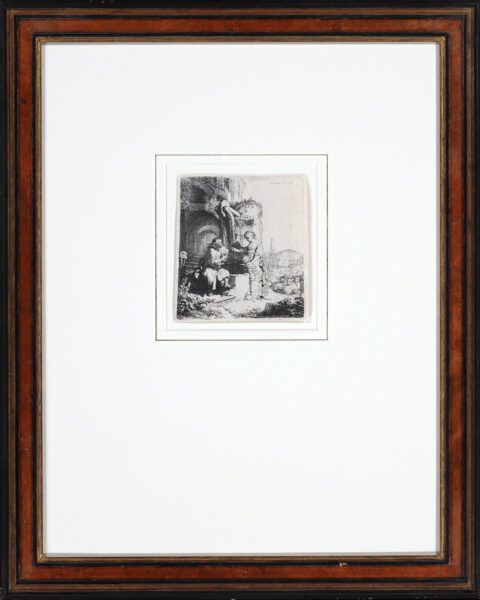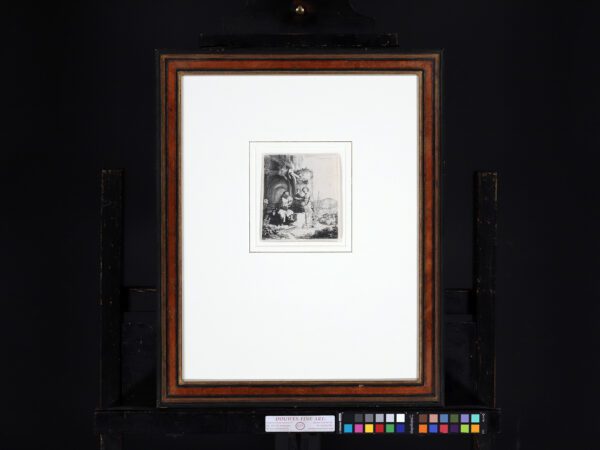“Christ and the woman of Samaria among ruins”, 1634
[John 4: 5-29]
Etching and touches of drypoint: 12,3 x 10,6 cm; complete with small margins;
signed and dated upper right: Rembrandt f. 1634
with watermark: Foolscap.
"*" indicates required fields
Notes
While traveling from Judea to Galilee, Christ and the Apostles broke their journey in Samaria, pausing to rest by Jacob’s well. While Jesus was waiting alone, a Samarian woman came to fetch water and in the course of their dialogue, Jesus revealed to her as the Messiah. (John 4:5-42).
This print dates from Rembrandt’s early career, not long after he had moved from Leiden to Amsterdam and when he was already a famous and fashionable artist. Over 20 years later he seemed to be almost obsessed with the theme – producing three paintings (see exh.1), a drawing and another etching.
Rembrandt depicts the Gospel text (John 4.4-42), when Jesus converts a Gentile, the Samarian woman, and at a deeper level, movingly addresses the reconciliation of the Christian faith with a receptive stranger. Christ is celebrated as the ‘fountain of water springing up into eternal life’, while the Samarians were an ethnic group reviled by the Jews for their heterodox Temple cult in which they worshipped idols alongside the Lord. Hence the woman’s initial disbelief when she asks Jesus ‘How is it that you, a Jew, ask a drink of me a woman of Samaria?’ Jesus replies: “Everyone who drinks of this water will thirst again, but whoever drinks of the water that I shall give him will never thirst.” The Samaritan woman had heard of the Messiah and that he was called Christ. ‘I am he,’ Jesus revealed to her. Rembrandt emphasizes the antiquity of the well by situating it before ruins.
Christ is shown here with the woman in a romantic landscape of stone ruins which extend into the background and beyond. They are captured in the midst of conversation as she gestures with her hands and he intently listens.
Only one state of the print was made in Rembrandt’s lifetime, all other states are later works.
Literature
Bartsch 71, Hind 122
‘The New Hollstein (Hinterding/Rutgers), 2013, no. 127, first state (of V).
With Nowell-Eusticke C1; plate in existence in a private collection, USA.
Provenance
- Private collection, USA
- by descent to the private collection of the heirs in Monaco
- Douwes Fine Art, Amsterdam, 2013
- Private collection, The Netherlands
- By descent to the current owners





